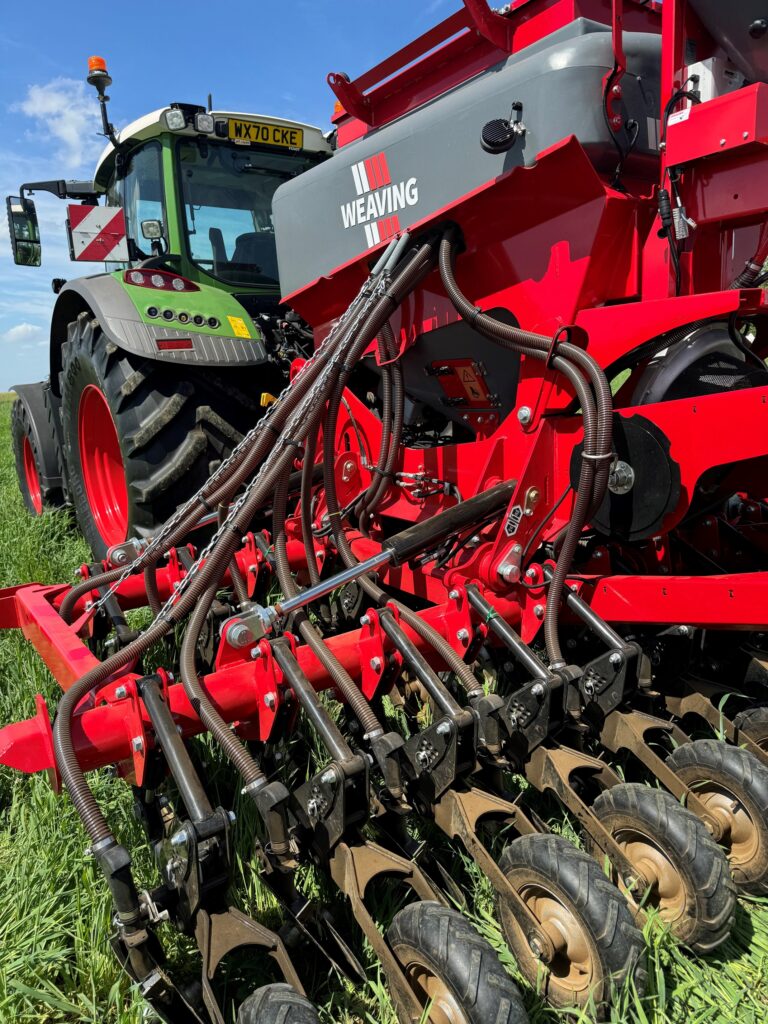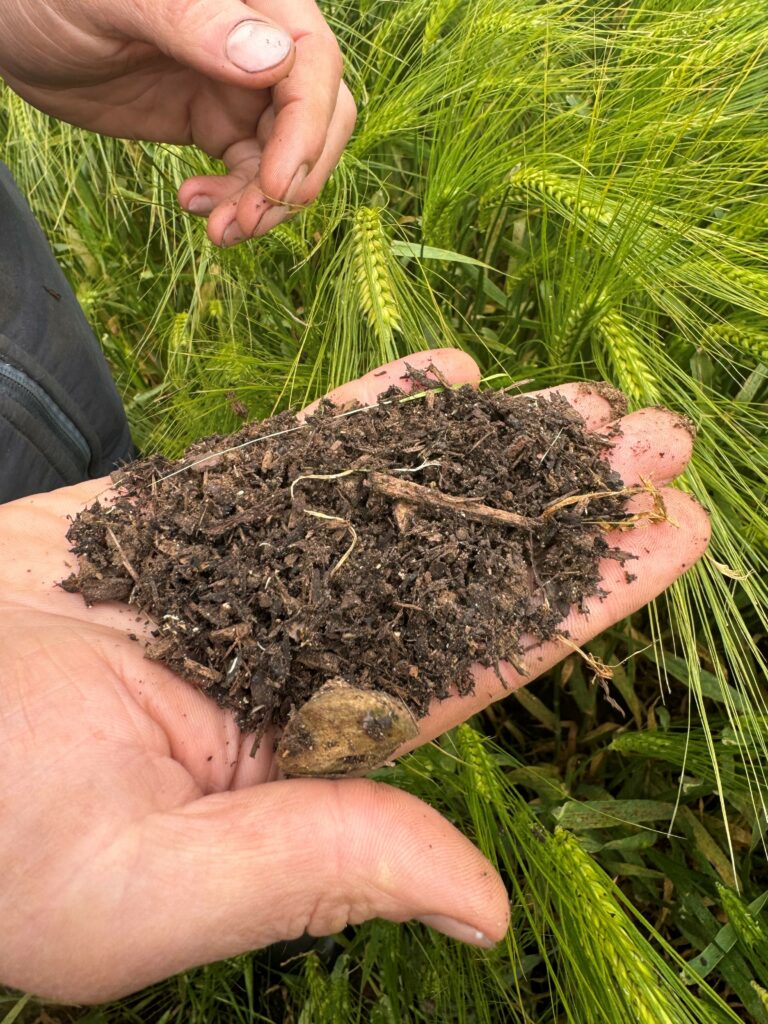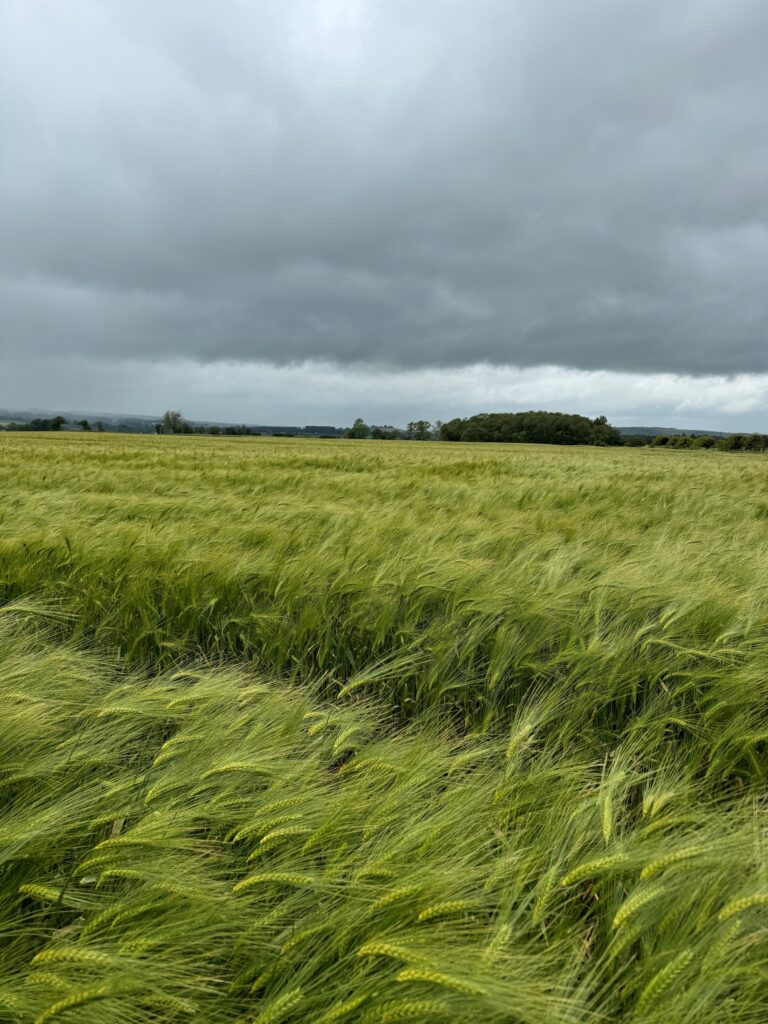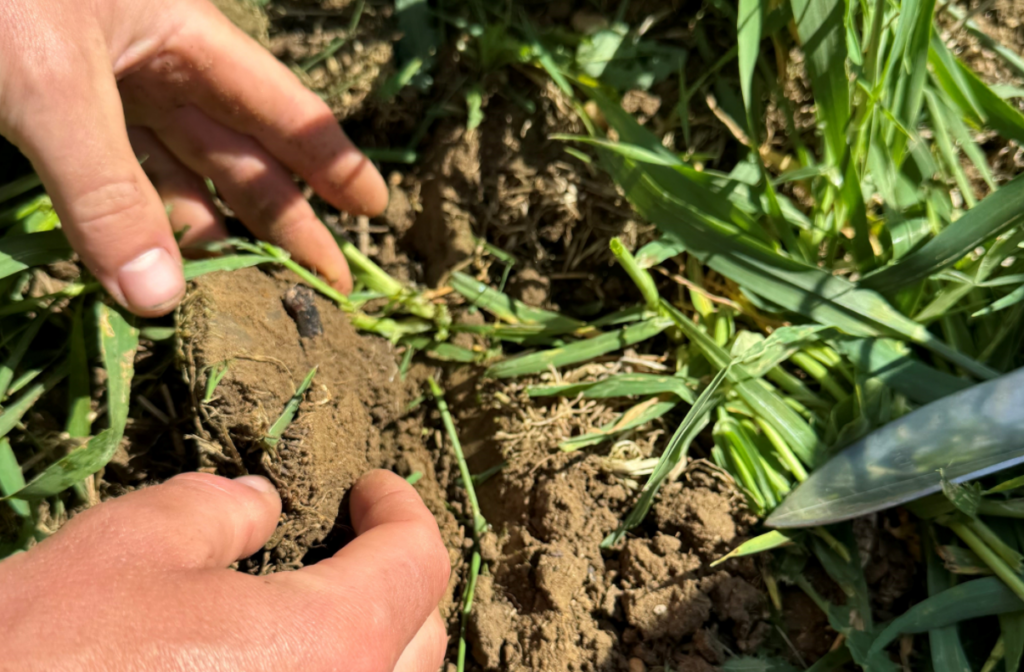Daniel Iddon of Woodland Grow came to the realisation that the soils we use to grow plants often simply aren’t purpose ready even though there may be crops growing at the moment: you can do EVERYTHING right, but still not get the bumper crops due!
Written by Erin Wiedmer, Director, Woodland Grow Ltd
“How does that make sense?”, you might well ask, “Isn’t soil, soil?”….. I would answer with a resounding NO!
Soils are part of a continuum – there are soils which are highly bacterial which are found at one end of the spectrum, and soils which are highly fungal found at the other. There is a natural process of evolution from bare rock materials, to deserts, to fields, and finally to forest floors that bounce back when they are walked on. Each of these soils will have different sand/silt/clay profiles which will develop from weathering, but the really interesting part is what happens in the soil organic matter, where most of the life is found. We are starting to understand that it’s this biological part that drives the chemistry and physics as opposed to the reverse.
The living component is where the nutrient cycling starts, and acts as the basis for the entire soil food web starting with plant. We all know that plants produce sugars by photosynthesis, but we are less aware of how the plants get nutrients beyond the sugars – the NPKs, sulphur, boron, calcium etc. Bacteria produce enzymes which break down rocks and mineral particles found in soils to extract the particular nutrient they are after. They are extremely effective at this – although they just produce one enzyme at a time so must focus on a single nutrient. (Look at the efficiency with which bacteria can extracting the calcium from teeth – even causing cavities given enough time!) Fungi on the other hand, make many enzymes and are capable of breaking down many chemical bonds simultaneously – but they aren’t quite as efficient so they take chemical molecules and they rebuild them into super complex shapes to make it harder for the bacteria to access them. They act like mini-refrigerators holding onto mineral crystal deposits for future use. Often, they will grow mycelium which are like underground networks, to rope together soil particles and keep them close at hand to ensure their mineral source and water are available when needed. These fungal networks are often invisible to the bare eye, but some can be seen as white threads when there are enough of them, if you look in the right places.

These bacteria and fungi are some of the densest sources of available N,P,K and micronutrients to exist in nature and they are the basis for the entire food web. The predators of these organisms make up the next level of the food chain, being protozoa and good nematodes (not the root feeders!) that eat enormous amounts of bacteria and sometimes fungi, and then excrete the excess minerals, which then are available for other organisms, such as plants, to ingest. This cycle repeats itself, as the nematodes and protozoa are eaten by mites and microarthropods, and larger nematodes and then worms, larger macroarthropods, lizards, birds, etc. etc. As each trophic level consumes the level below, the concentration of nutrients becomes toxic, and the excesses are excreted, to repeat the cycle as it becomes food for other organisms. The organisms at levels must be present in the right numbers to form a pyramid shape to support the system. For example, a protozoa can eat between 10,000 to 16,000 bacteria per day but without the proper balance in numbers, the system will collapse. It is the constant interplay between growth and predation that makes nutrients flow for plants to take in.
Depending on the makeup of the soil and the general climatic conditions, you will likely find various numbers and ratios of these bacteria and fungi, protozoa and nematodes. Each tends to operate in very thin bands of conditions such as temperature, humidity, pH, oxygen levels etc. With a change of just a few degrees temperature , or humidity, the microbe communities may change dramatically: some will go to sleep until the conditions are more favourable, and others become active, taking their place but within a separate climatic band, so having the diversity is essential. The absolute and relative numbers will determine how well your soil can support your crops throughout the year.

Coming back to Daniel, he had his ‘Aha’ moment when he realized that in a nursery, plants are not being fed by the soil – they are being fed by the synthetic fertilisers that are continuously applied. When the plant is put into the ‘real’ world, where it has to fetch these nutrients for itself, it needs these bacteria, fungi and higher levels organisms to be present and active in the root zones for the plants to access them. There is a nature gap!
The microorganisms don’t grow when the plant has been fed the synthetic fertilisers. The same is true for fields where synthetics have been applied. The soils have lost their ability to cycle nutrients and until the microbiome is rebuilt, the land can no longer optimally feed the crops naturally. This is where we start to see foliar deficiencies, where the plant will draw nutrients from its own tissues to maximise the survivability of the seed.
After years of trials, Woodland Grow now has a technique to encourage the growth of these soil communities while still supporting the nutritional needs of the crops, having grown various plants from lettuce to Giant Sequoia, and everything in between.

When we feed plants synthetic fertilisers, and use pesticides and herbicides, we inadvertently kill the microbiology. Plants have to grow their own microbiomes. Normal seeds (not GMO which are sterilized) come with the microbiome of the parent plants: millions of microbes adapted to the local growing conditions are held within and on the seed. These microorganisms grow around the roots as the seed germinates and consume both the minerals in the substrate, and the sugars fed to it by plants in exchange for the minerals. Plants have been shown to give between 40-70% of these sugars as root exudates. It goes to show how vital this is to the plant’s health. This symbiosis is how plants grow in nature and how the microbiome develops.
Each community will have different players and different numbers of certain organisms depending on the plant’s needs. When we have an early succession plant, such as a tomato or cabbage, it’s needs, and therefore its microbiome, will be quite different than those of a cereal or a tree-crop. Generally, we find that the fungal to bacteria ratios follow a standard pattern, even if the individual players are quite different. This makes planting a tree in the middle of a field a difficult proposition even if the tree seems healthy when planted, and the soil in the field produces a healthy cereal crop: the microbiomes don’t speak the same language – they have a nature gap – and unless the tree is capable of growing its own microbiome quickly enough, it risks dying.
Feeding synthetic fertilisers results in the plants limiting or stopping entirely the sugar exchange with the microbes for nutrients, because the nutrients are provided in the feed for free. It costs the plant a great deal of energy to produce these sugars through photosynthesis, so it will hold onto them where it can. This strategy works only for as long as the fertiliser is present – which often is a very limited time. As we know, some nutrients, like N, are highly soluble and will wash away with the slightest rain unless they are held in place by the biology. If the microbes starve because the plant withholds the sugars, they are no longer present to exchange with the plant when the plants needs them.
Sometimes we apply glyphosate to the soils. Glyphosate is a patented and effective antibiotic, even though it isn’t sold as such. Killing the bacteria and the fungi results in less capacity for the soil to support life. Tillage does the same thing: it slices and dices the fungi and microorganisms, so they die and are no longer present to function as intended. This results in compaction even though it seems like we’re opening up the soils when the plough passes: the mycelium provide that special soil structure and without them, the soil collapses and the nutrient/water “highway” provided by them is reduced.
How can we ensure that there are enough microorganisms and that they can communicate with the soils beyond the seed? This is our specialty at Woodland Grow. We look at soil samples and measure the numbers of soil microbes that are in proximity to the roots to ensure there are enough different types and numbers of individuals to be able to support the needs of plants. It isn’t enough to sprinkle one type of microbe – like nitrogen fixing bacteria or a particular fungus – to solve the problem. That is simply pushing the system out of kilter to fix one issue, but not actually addressing the underlying cause which is a dysfunction in the microbiome of the soil.

Woodland Grow decided it was time to take action and find a permanent solution to the damage of synthetic fertiliser applications. We have managed to grow living soils with high microbial numbers that we match with nutrition in order to support farmers who are trying to decrease fertiliser application but whose soils are not quite cycling nutrients on their own. Our results show healthier, more nutrient dense crops and lands that have a higher carbon content after even one season.
We travel from farm to farm and forest to forest around the country taking samples of the soils for our clients which we analyse under the microscope or with eDNA. Most of the soils that we see are deficient in fungi and the higher order microbes, meaning there is no natural cycling of nutrients available to the plants. This results in lower crop yields, less nutrition, and pest and disease problems. We can often see this by the weed pressures, compaction and water runoff as well.
Woodland Grow’s mission is to help farmers repair their soils, and in doing so, to improve the environment, the nutritional value of food and keep more money in their pockets: all these things are related. Our products were made to be applied in the easiest manner possible. We trialed drilling the fertiliser pellets with Weaving at the Groundswell 2024 with great success. Farmers now have the choice of applying an additional microbiome coating on the seed, drilling our fertiliser pellets directly with the seed, or spreading it on the surface with a muck spreader – or all three. Whichever option is chosen, we know the plants, and the soils, will be healthier for it!
If you are looking for a way to reduce your synthetic fertiliser inputs, and are interested in a discussion, please get in touch with us. Soil is our favourite subject.
Erin Wiedmer is a holistic soil scientist and permaculture designer who focuses on soil microbiology with a particular interest in land restoration. She has taught permaculture for Elaine Ingham’s SoilFoodWeb school, lectured and worked on projects in UK, Costa Rica, Spain, France, Hungary, Jordan and Canada.




